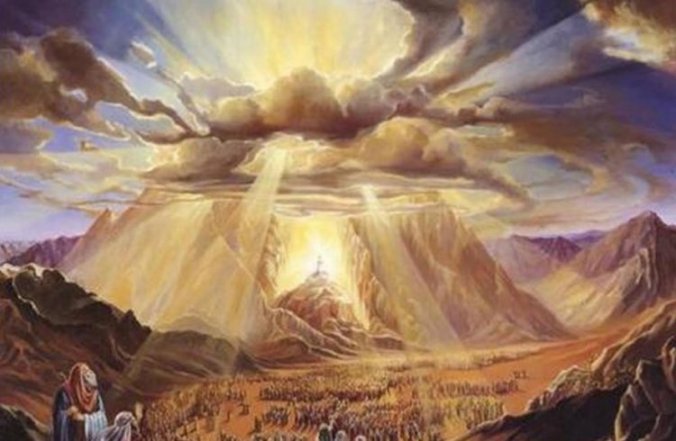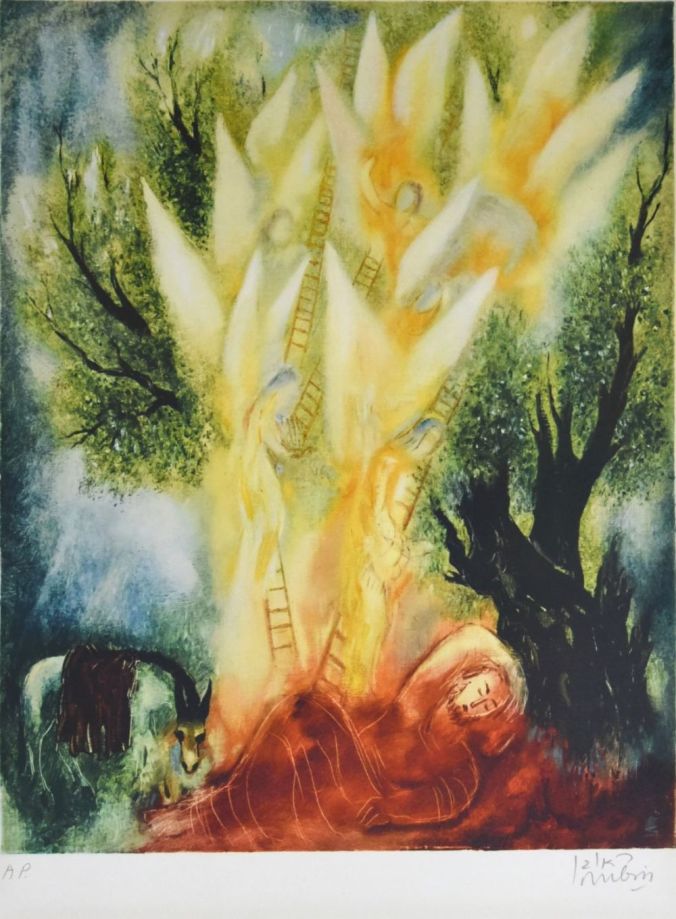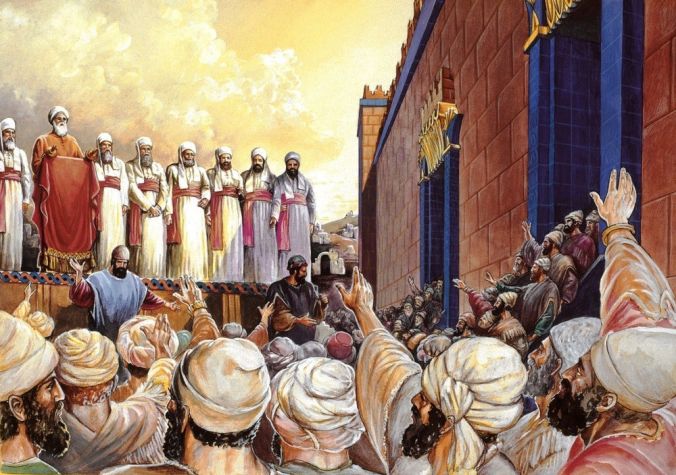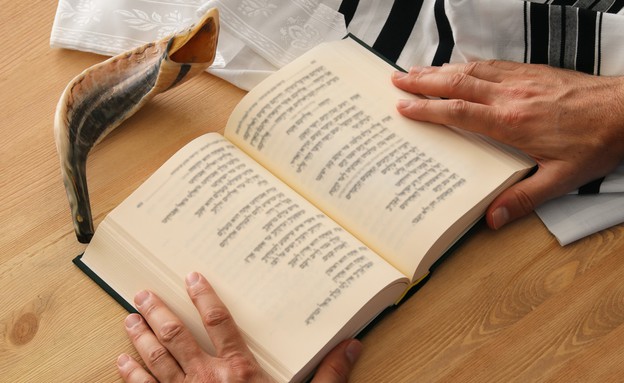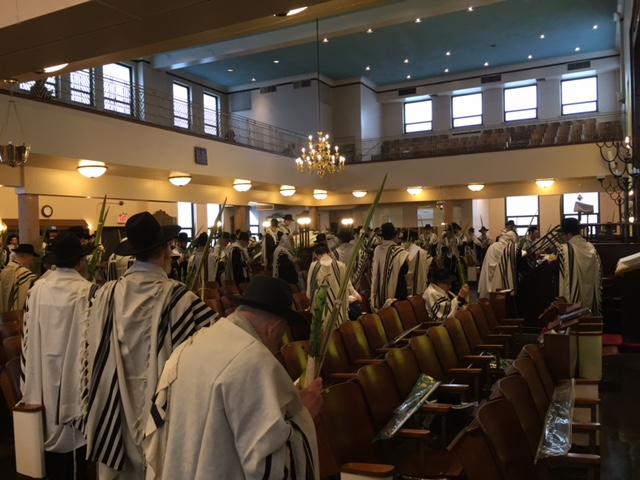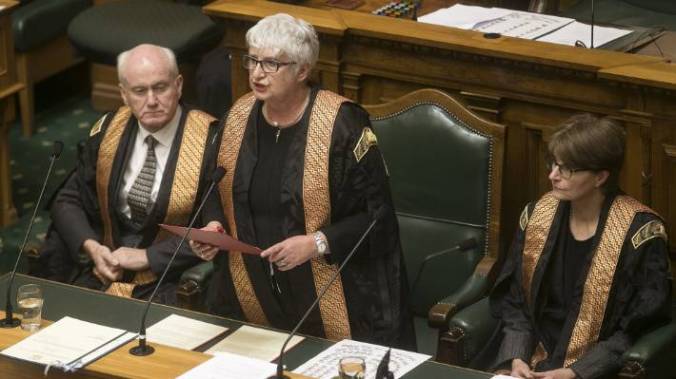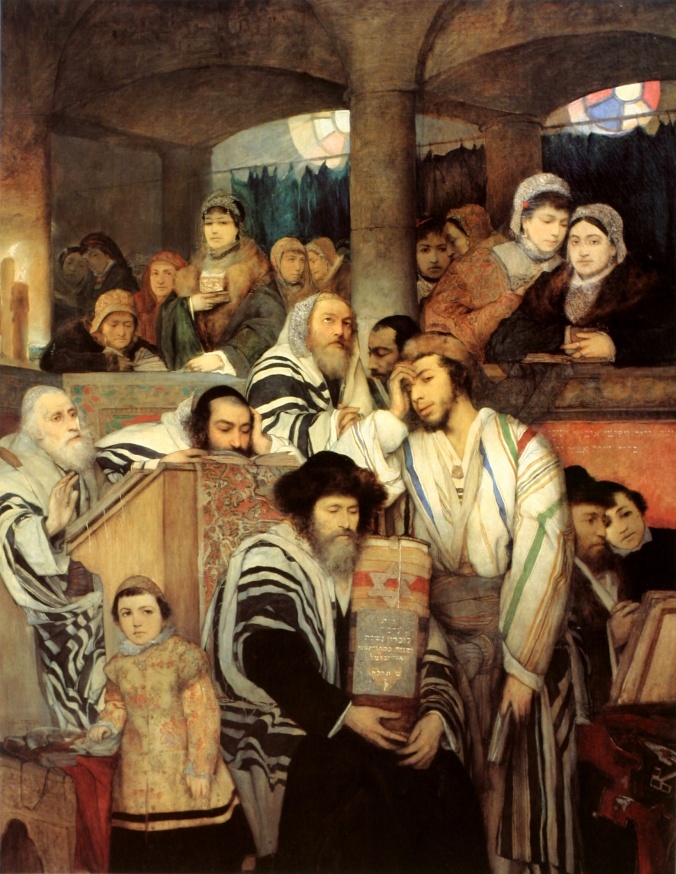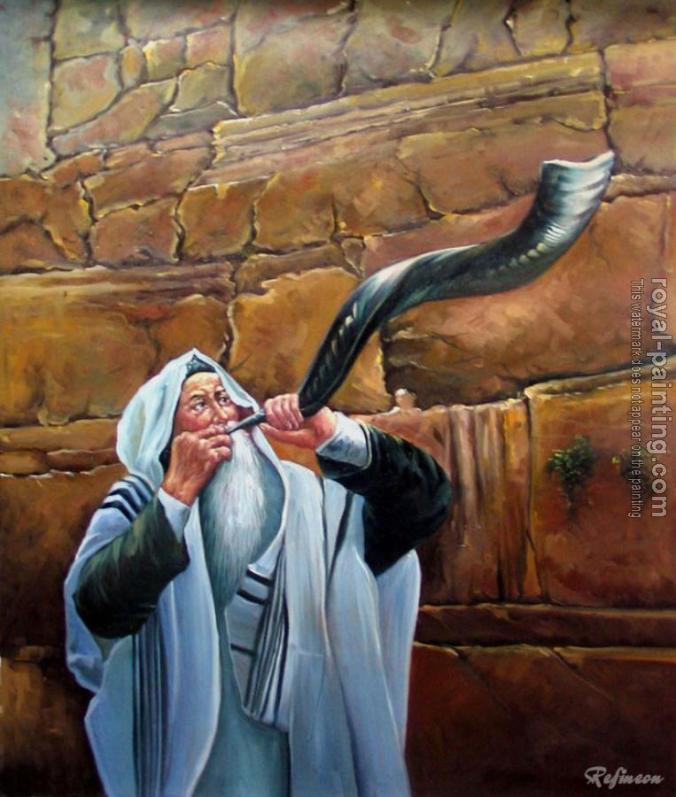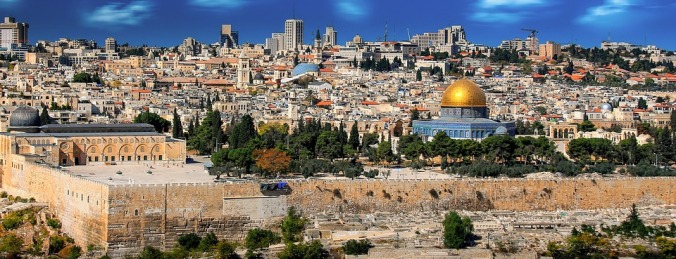
It is said about Rav Moshe Teitelbaum zt”l, that his longing for Moshiach to come was incredibly intense. He is quoted as saying, “If I had known in my youth that in my old age Moshiach still had not come, I would not have physically survived due to the pain (his delay) would cause me. My soul would have left me. However, it is only because of my trust and hope in Hashem that he will come that I have survived until today. “[1] This is the delicate emotional balance we all strive for on Tisha B’av. On the one hand sad that we are still in exile, while at the same time looking towards the future hoping and believing that Moshiach will come.
This idea is punctuated by Chazal in the Talmud Yerushalmi Berachos[2] and Midrash Eicha Rabbah [3]that Moshiach was born on Tisha B’av. This is not merely a description of past history. On the contrary, the intent is that every year Tisha B’av generates a new impetus for the coming of the redemption.
While we wonder at and are inspired by the lofty spiritual level of Rabbi Teitelbaum, one must ask two questions:
- To what extent is one’s obligation to believe Moshiach is coming? Is it enough to believe that he will come or is there also an obligation to eagerly await his arrival?
- How does one become a person who truly believes in and awaits Moshiach’s arrival?
Many people are accustomed to reciting daily the version of Rambam’s 13 Principles of Faith printed in most sidurim. There it says,
אֲנִי מַאֲמִין בֶּאֱמוּנָה שְׁלֵמָה בְּבִיאַת הַמָּשִֽׁיחַ, וְאַף עַל פִּי שֶׁיִּתְמַהְמֵֽהַּ, עִם כָּל זֶה אֲחַכֶּה לּוֹ בְּכָל יוֹם שֶׁיָּבוֹא””
“I believe with perfect faith in the coming of the Messiah, and, though he tarry, I will eagerly await daily for his coming.”
This belief is not just a mystical concept or G-d forbid Jewish myth, it is in fact an obligation as the Gemara Shabbos 31a writes:
תלמוד בבלי מסכת שבת דף לא עמוד א
אמר רבא: בשעה שמכניסין אדם לדין אומרים לו: נשאת ונתת באמונה, קבעת עתים לתורה, עסקת בפריה ורביה, צפית לישועה…
Rava said: At the moment that a person is brought before the Heavenly court, they say to him: Did you deal honestly in business? Did you have set times for learning Torah? Did you engage in producing children? Did you anticipate the salvation (coming of the Moshiach)?
Rambam writes that this Gemara is not just an inspirational concept, rather “whoever does not believe that Moshiach will come, or one who does not eagerly await his coming is a kopher (heretic) in the prophecy and Torah of Moshe Rabbeinu”.[4]
It is clear from Rambam that it is not enough to believe that Moshiach will come but to eagerly await his arrival every day. This is clear from the Pesikta D’Rav K’hana[5], paraphrasing from the posuk in Yoel[6] and Tzephania[7] , “Master of the Universe, when will You judge the nations of the world? Hashem answers, when you eagerly await My (and by extension, Moshiach’s) arrival. It is said about Rav Shmuel of Salant that every day when he would pray Shemoneh Esrah, just prior to reciting the blessing of Es tzemach David, which asks for the coming of Moshiach, he would pause, then look right and then left, then continue praying. His students finally one day asked him why he does such an odd thing when he davens. He answered, that he knows that Moshiach will come today, and before he doesn’t want to make an unnecessary blessing, so he pauses to see if he sees Moshiach is coming before he makes the blessing.
Rav Azriel Tauber[8] asks, what is unique about the coming of Moshaich that it is it not enough to believe in the coming of Moshiach, why do we need to eagerly await his arrival as well?
He provides three unique approaches:
Approach #1 – Personal Growth
Rabbi Dovber Schneuri, the second Chabad Rebbe and son of Shnuer Zalman of Liadi, author of the Tanya writes that in the times of Moshaich, people will still be able to perform the commandments and learn Torah as we do now, nothing will change in terms of that. He explains that this is because in the world as it exists currently, there are so many outside stimuli and distractions that prevent us from reaching our potential such as wars, suffering, anti-semitism. However, when Moshiach comes, we will revert back to a time similar to Adam in the Garden living in an ideal environment enabling us to be engaged in holy actions and to reach our potential. [9] Therefore, Rav Tauber expands, we need the times of Moshiach to be upon us in order for us to achieve our greatest spiritual heights before we go to the World to Come for eternity.
Approach #2 – World Recognition of the Creator
Even if individually we reach our potential, that still is not enough. The ultimate goal is for all
people, despite race, creed or nationality to recognize and to coronate Hashem as the King of
the universe. Rav Shimon Schwab, explains that we see this idea from a posuk that we say
every day in our morning prayers. In “Yehi Kavod” we say the verse :
וְיֹאמְרוּ בַגּוֹיִם יְ-ֹוָה מָלָךְ: יְ-ֹוָה מֶלֶךְ. יְ-ֹוָה מָלָךְ. יְ-ֹוָה יִמְלֹךְ לְעוֹלָם וָעֶד: יְ-ֹוָה מֶלֶךְ עוֹלָם וָעֶד. אָבְדוּ גוֹיִם מֵאַרְצוֹ:
“And the nations will say, Hashem was King, is King, and will be King, Hashem will be King forever more, the nations of the land will be lost”.
Rav Schwab explains that this verse doesn’t G-d forbid mean that when Moshiach comes all the nations of the world will be destroyed. It means that when Moshiach comes, the concept of a “the other nations” which segregates and separates different kinds of people will be eradicated from the world. Everyone in the world will be united under one common banner of serving the Master of the Universe.[10]
Accordingly, each one of us needs to desire and await the coming of Moshiach so that all beings will recognize the Creator.
Approach #3 – Inspire the generation
Rav Moshe Chaim Luzzatto writes that prior to the end of the days of Moshiach, before the next stage of creation, the Jewish people need to become perfected. By Moshaich coming, it will inspire the chosen nation to spiritual greatness and will destroy sin and the evil inclination. When people are confronted with the physical truth of a Melech Hamoshiach, it will be a spiritually overwhelming experience and they will uplifted to refocus on their spiritual growth and less on their physical and mundane needs.[11]
Based on the above approaches, Rav Tauber explains that when an individual doesn’t eagerly await the coming of Moshiach and merely knows he is coming, it is a sign that the individual is spiritually stunted. That person is disconnected from the ultimate goal that the Creator has for our world, our people and for us as individuals. His goal is to create a world which will crown Him King, fulfill His commandments, and eradicate evil in order to give everyone their just reward in the World to Come. This sentiment is known widely as the pervasive attitude of the Chofetz Chaim as illustrated in the following beautiful story:
Rav Simcha Bunim Alter, the Gerrer Rebbe writes[12] that his father Rav Avraham Mordechai Alter, known as the Imre Emes met with the Chaftez Chaim at the first Kenessiah Gedolah in Vienna in 1923. The Chofetz Chaim said to the Imrei Emes, “We say (in Kedusha of Shabbos Shacharis) to Hashem that ‘we are awaiting you’, but is this really so? Are we really waiting? We have to feel as we are lacking and desiring this! The Chafetz Chaim then raised his hands and asked again, “Are we really waiting?” He told the following parable, “We need to await his arrival like a father and mother who are yearning the arrival of their only son who they haven’t seen in a long time. They know that at any minute he might arrive, so every carriage and train that passes by, they think might be his. However, even when they realize that their son was not in the carriage or on the train, they still wait for him. “
So far we have seen that the levels that our Gedolim and Chazal who are so spiritually engaged have reached in terms of their connection to the Moshiach. The question is, how can an average person begin to reach such a level and how should one direct their mind to begin to intellectually and spiritually connect with Moshiach?
Approach #1 – Living for Hashem
Let us turn our attention to an amazing Gemara in Bava Metziah 85b, where we learn two amazing stories about Rebbi Chiya that on the surface seem to be unrelated.
The Gemara states:
תלמוד בבלי מסכת בבא מציעא דף פה עמוד ב
אמר ליה רבי חייא לרבי חנינא: בהדי דידי קא מינצית דעבדי לתורה דלא תשתכח מישראל מאי עבידנא, אזלינא ושדינא כיתנא, וגדילנא נישבי, וציידנא טבי ומאכילנא בשרייהו ליתמי, ואריכנא מגילתא וכתבנא חמשה חומשי, וסליקנא למתא ומקרינא חמשה ינוקי בחמשה חומשי, ומתנינא שיתא ינוקי שיתא סדרי, ואמרנא להו: עד דהדרנא ואתינא – אקרו אהדדי ואתנו אהדדי, ועבדי לה לתורה דלא תשתכח מישראל. היינו דאמר רבי: כמה גדולים מעשי חייא!
[13]When R. Chanina and R. Chiya argued in Torah, R. Chanina said how do you argue with me? If Torah would be forgotten from Yisrael, I could return it through my analytical skills!
Rebbi Chiya: How do you argue with me? I ensured that Torah will never be forgotten from Yisrael!
Rebbi Chiya planted flax, and wove traps from the flax. He caught deer, fed orphans the meat and made parchments from the skin. He wrote five Chumashim and went to a city without teachers for children. He taught one Chumash to each of five children, and one order of the Mishnah to each of six other children. He told them to teach each other what each had learned. (Because everything was done for the sake of Torah, this ensured that it would never be forgotten.
אליהו הוה שכיח במתיבתא דרבי יומא חד ריש ירחא הוה נגה ליה ולא אתא א”ל מאי טעמא נגה ליה למר אמר ליה אדאוקימנא לאברהם ומשינא ידיה ומצלי ומגנינא ליה וכן ליצחק וכן ליעקב ולוקמינהו בהדי הדדי סברי תקפי ברחמי ומייתי ליה למשיח בלא זמניה א”ל ויש דוגמתן בעולם הזה אמר ליה איכא ר’ חייא ובניו גזר רבי תעניתא אחתינהו לר’ חייא ובניו אמר משיב הרוח ונשבה זיקא אמר מוריד הגשם ואתא מיטרא כי מטא למימר מחיה המתים רגש עלמא אמרי ברקיעא מאן גלי רזיא בעלמא אמרי אליהו אתיוהו לאליהו מחיוהו שתין פולסי דנורא אתא אידמי להו כדובא דנורא על בינייהו וטרדינהו
Eliyahu was regularly in Rebbi’s academy. One Rosh Chodesh he was late. He explained that he first had to wake Avraham, wash his hands, and lie him down again after he prayed. He then did the same for Yitzchak, and then the same for Yaakov.
Rebbi: Why don’t you wake them at the same time?
Eliyahu: If they would pray at the same time, this would bring Moshiach prematurely.
Rebbi: Is there anyone living today with such a power of prayer?
Eliyahu: Yes, Rebbi Chiya and his sons.
Rebbi decreed a fast. He asked Rebbi Chiya and his sons to lead the prayer. When they said ‘Mashiv ha’Ru’ach’, wind blew. When they said ‘Morid ha’Geshem’, rain fell. When they were about to conclude the Berachah ‘Mechayeh ha’Mesim’, the world shook. In Heaven, Eliyahu was lashed with fire for having revealed their power of prayer.
Eliyahu appeared to them like a bear of fire to distract them.[14]
The Maharsha asks, why is it that Rebbi Chiya has the power to create such powerful prayers, that he can bring the Moshiach prematurely like our forefathers? The Maharsha explains that the key is in the first Gemara about Rebbi Chiya producing a Sefer Torah for children to be taught with. Each and every step of the production of those Torahs and the teaching of it were completely free and unburdened from any intention except the intention to teach Torah. After he caught the deer, he didn’t say, “Maybe I can use some parts of the deer and sell them.” Every part and detail was completely focused on the mitzvah lishma, for its own sake. That is why Rebbi Chiya’s prayers were so powerful, his prayers were also not for himself but rather to bring about the greatest amount of honor for Hashem in this world.[15]
This is one way that we can begin to connect with longing for Moshaich. We need to develop our prayers and longing for Moshiach such that it is not for our own benefit, and what we will gain from Hashem or Moshiach, but rather what it will do to accomplish the goals that Rav Tauber laid out earlier, to bring the greatest glory to the Creator.[16]
Rebbe Nochum of Chernobil once came to an inn in a village. At chatzos (midnight) he got up and said Tikun Chatzos. He sat on the ground and wept and cried over the destruction of the Beis Hamikdash. It was so loud the owner of the inn got up as well. The owner asked him what he was doing, he told him he davening to Hashem that the Melech Hamoshiach should come quickly. When the Jew just sat staring at him with a blank look, the Rebbe said to him, “ Don’t you want Moshiach to come and for us all to go to Yerushalayim? He answered him, I don’t know I have to ask my wife. He came back and said, my wife said we can’t abandon our ducks, so were not interested. The Rebbe answered back, what about when the Kosacks steal your ducks and all your possessions? He went back and asked his wife, she said, ok, daven for Moshiach that he should come and take the Kosacks to Yerushalayim. [17]
Approach #2 – Mourning ourselves
The Gemara in Sotah 49a writes, “From the day the Beis Hamkidash was destroyed…every day curses (klalah) increases more than the previous day. The Ramban in Devarim [18] explains that these are the curses found in the “Tochacha”, the rebuke found in the Parsha of Ki Savo. Rav Moshe Shapiro explains the Ramban that these curses affect every aspect of our physical day and are pervasive in our life. It will only end when Moshaich comes and ends the current exile. Rav Shapiro writes, “(In exile) Our lives are antithetical to what they should be in every aspect. Man is not a man, friendship is not friendship, truth is not truth, and pleasure is not pleasure. Nothing is the way it should be.”
Without a Beis Hamikdash and G-d’s presence being seen and felt on a daily basis, we have largely lost touch with man’s purpose and role in this world. When we mourn on Tisha B’av, we mourn not only that we are in exile, we mourn for ourselves that we are not who we should be. Rav Shapiro writes that Rav Chaim Vital writes in the introduction to his work Shaarei Kedusha that in his day he was witnessing individuals that were not being successful achieving “Ruach Hakodesh”. Therefore he wrote his work to help achieve that goal. If today someone wrote that in a sefer, we would think they are joking, but really we should be crying that we have a hard time relating to that kind of holiness. This gives us a glimpse of what we continue to lose as long as we do not have Moshiach to end our bitter exile. In order to really want Moshiach to come we have to want to end this reality in order to go back to an earlier time so we can experience Hakadosh Boruch Hu, see his open miracles and reach our potential as individuals as a nation and as a world.[19]
It is said about Rav Shlomo Freifeld zt”l, Rosh Yeshiva of Yeshiva Sho’or Yoshuv, that his office was adorned with pictures of Gedolim. Once, a student in the yeshiva who was new to Judaism came into his office to speak with him. He innocently asked Rav Freifeld who all the people on the wall are. Rav Freifeld sharply answered him, “They are part of a long lost tribe of beings that are very rare today … they are called people.
It should be His will that we should continue to work on ourselves and Hakodosh Boruch Hu will send the Melech Hamoshiach and we too will all become “people” like those on Rav Freifeld’s wall.
Rabbi Shimon Schenker, who currently serves as Associate Principal, has been teaching in YUHSB since 2001. He began as Rebbe in the PTACH program based at YUHSB and then transitioned to become the Director of YUHSB’s Learning Center as well as a beloved Maggid Shiur.
Rabbi Schenker has a B.S. in Management Information Systems from the Sy Syms School of Business of YU, an M.S. in Jewish Education from the Azrieli Graduate School of Education of YU, a Masters in Special Education from Herbert Lehman College CUNY and Rabbinic Ordination from RIETS of YU. He is also trained in the Orton-Gillingam Reading Remediation by the Institute for Multi-Sensory Education.
Rabbi Schenker was the recipient of the Grinspoon-Steinhardt Award for Excellence in Jewish Education in 2013. He delivers Halacha shiurim and teaches chassan classes in Passaic, New Jersey where he lives with wife and family.
[1] Zakai, Likras HaGeulah p. 88
[2] 2:4
[3] 1:51
[4]4 Hilchos Malachim 11:1
[5]5 Nepachim letter beis
[6]6 4:12
[7]7 3:8
[8]8 Pirkei Machshavah , 13 Principles p. 362
[9] Toras Chaim Parshas Vayechi
[10] Rav Schwab on Prayer
[11] Sefer Maamar Haikarim s.v. B’geulah
[12] Meir Einei Yisrael Section Three p. 680
[13] As per tranlation from http://dafyomi.co.il/bmetzia/points/bm-ps-085.htm
[14] Ibid
[15] In his commentary to the Gemara there.
[16] See Nefesh Hachaim 2:11. See also Sefer Matnas Chaim, Rav Matisyahu Solomon Shli”ta p. 5 who uses the concept of davening for the sake of the Creator to answer the question of why on Rosh Hashana we don’t ask for any specific items even though that is the day we are being judged for physical items.
[17] Cited in Likras Hageulah p.101
[18] 28:42 and S’forno there
[19] R’aih Emunah p. 312

